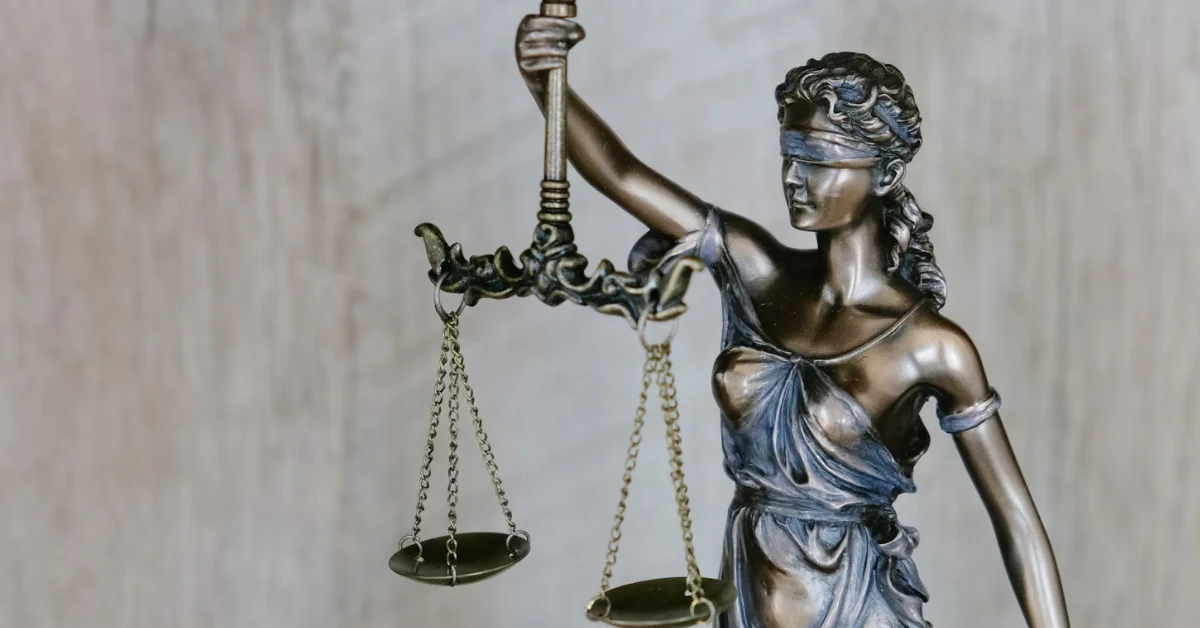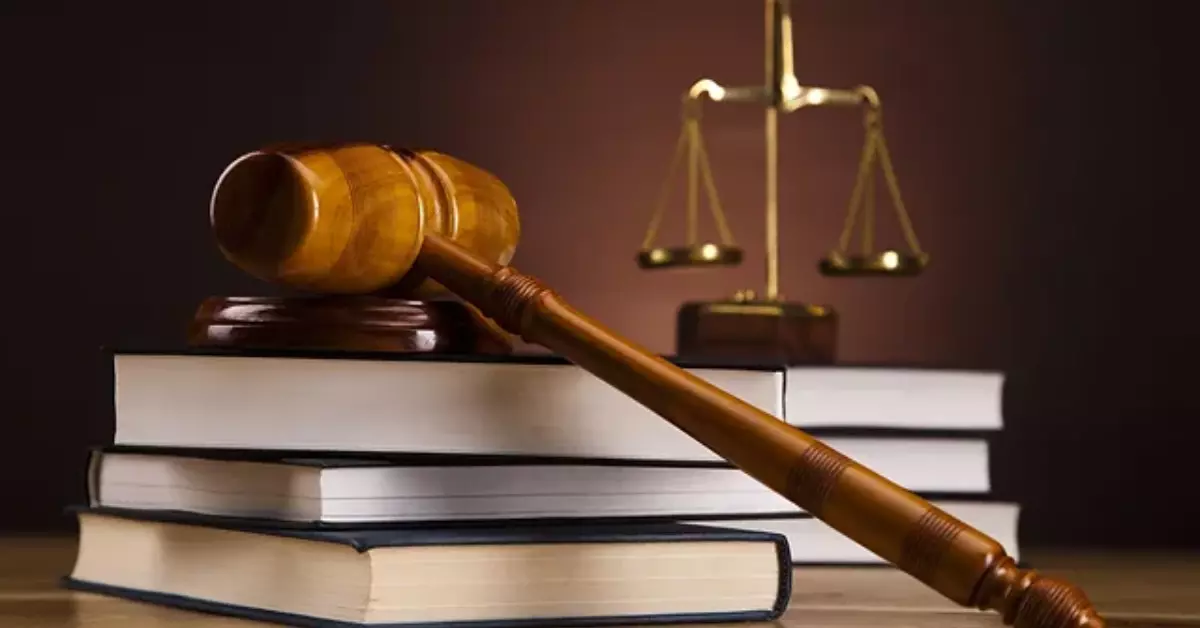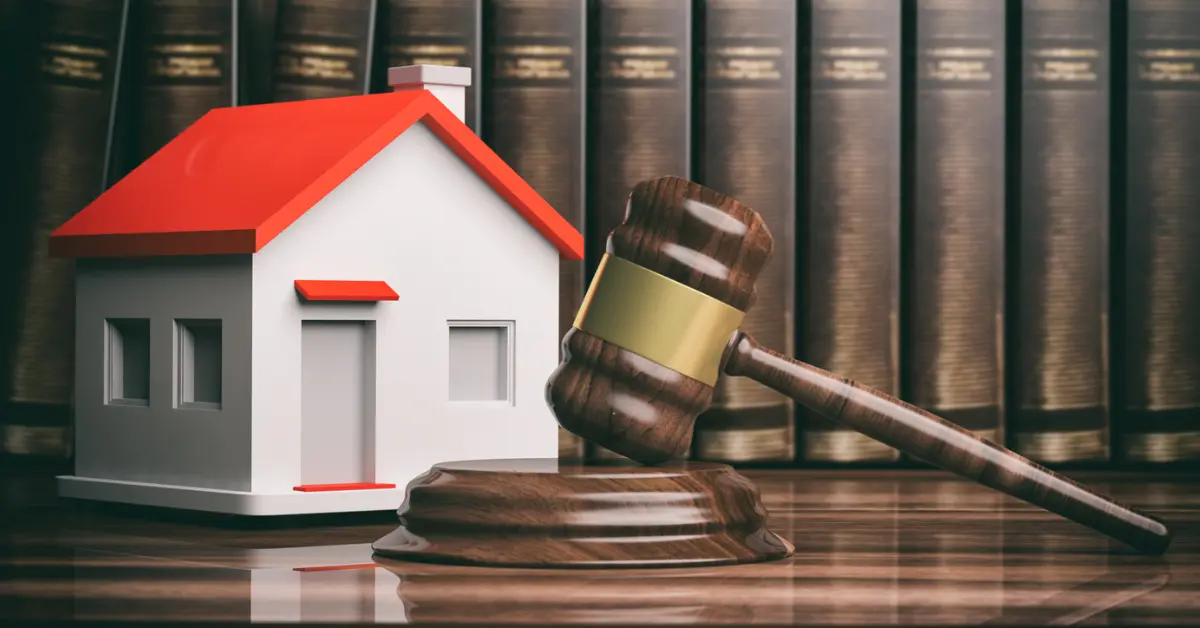Law
C.W. Park USC Lawsuit: A Comprehensive Overview

The C.W. Park USC Lawsuit refers to a legal dispute involving Dr. C.W. Park, a professor at the University of Southern California (USC). The lawsuit revolves around a series of allegations against Dr. Park, which include academic misconduct, harassment, discrimination, and ethical violations.
The controversy surrounding the C.W. Park USC Lawsuit emerged when accusations against Dr. Park surfaced, claiming various forms of misconduct that had allegedly occurred within the academic environment at USC. These allegations raised significant concerns about the integrity of academic processes, the treatment of students and faculty members, and the overall ethical standards within the university.
The C.W. Park USC Lawsuit unfolds as a tale of scrutiny and introspection within the hallowed halls of USC. As allegations surfaced, they brought forth a storm of controversy, challenging not only the integrity of Dr. Park but also the fabric of USC’s academic environment. It’s imperative to unravel the intricacies of this lawsuit, for within its folds lie profound lessons and reflections that resonate far beyond the walls of academia.
RELATED: Paul Mackoul MD Lawsuit
- Background of the Lawsuit
- Allegations Against Dr. C.W. Park
- Involvement of the University of Southern California (USC)
- Legal Proceedings and Current Status
- Impact on USC and Its Community
- Response from Dr. C.W. Park
- Lessons Learned and Changes Made
- Public Reaction and Media Coverage
- Frequently Asked Questions
- Conclusion
Background of the Lawsuit
Dr. C.W. Park, esteemed within his field, once epitomized the pinnacle of academic excellence at USC. However, whispers of misconduct began to circulate, casting a shadow over his illustrious career. The emergence of allegations against Dr. Park heralded a tumultuous period, unraveling the intricate dynamics between faculty and institution.
The allegations, ranging from tampering with academic records to fostering hostile environments, ignited a firestorm of debate and introspection. Within this crucible of controversy, the essence of academic integrity and institutional responsibility came under intense scrutiny, challenging the very essence of USC’s ethos.
Allegations Against Dr. C.W. Park
The allegations against Dr. Park cut to the core of academic integrity and ethical conduct. Accusations of academic misconduct, harassment, discrimination, and ethical violations reverberated through the halls of USC, shaking the foundation of trust and respect.
The impact of these allegations rippled through the academic community, leaving a trail of uncertainty and apprehension. Students and faculty members found themselves grappling with the implications of these accusations, as questions of trust and accountability loomed large.
Involvement of the University of Southern California (USC)
As the allegations gained traction, USC found itself thrust into the spotlight of scrutiny. The university’s response to the allegations and its internal investigations became focal points of contention, raising questions about institutional transparency and accountability.
Amidst the turmoil, USC navigated a delicate balancing act, striving to uphold its commitment to academic integrity while safeguarding the welfare of its students and faculty members. The measures taken by USC in response to the allegations would shape the trajectory of the lawsuit and its implications for the broader academic community.

Legal Proceedings and Current Status
The legal proceedings surrounding the C.W. Park USC Lawsuit unfolded with a sense of gravity and anticipation. As plaintiffs and defendants presented their cases, the courtroom became a crucible of truth and accountability.
Updates on the lawsuit and recent developments served as beacons of hope for clarity and resolution. Yet, amidst the labyrinth of legal intricacies, the path forward remained uncertain, with the fate of Dr. Park and USC hanging in the balance.
Impact on USC and Its Community
The repercussions of the C.W. Park USC Lawsuit reverberated far beyond the confines of USC, casting a long shadow over the institution’s reputation and ethos. The lawsuit’s impact on students, faculty, and the broader academic environment underscored the fragility of trust and the imperative of accountability.
As USC grappled with the fallout, it confronted profound questions of identity and purpose. The resilience of its community and the measures taken to address the underlying issues would define its journey towards redemption and renewal.
Response from Dr. C.W. Park
In the face of adversity, Dr. C.W. Park stood resolute, vehemently denying the allegations leveled against him. His response to the lawsuit epitomized a steadfast commitment to defending his reputation and integrity, even in the face of insurmountable odds.
Dr. Park’s actions and statements reverberated through the corridors of academia, sparking debates and reflections on the nature of truth and accountability. Yet, amidst the cacophony of voices, the essence of his defense remained unwavering – a testament to the indomitable spirit of conviction.
Lessons Learned and Changes Made
The C.W. Park USC Lawsuit served as a crucible of introspection, yielding profound lessons and insights for USC and the broader academic community. The revelations unearthed by the lawsuit underscored the imperative of vigilance and transparency in upholding the tenets of academic integrity and ethical conduct.
In the aftermath of the controversy, USC embarked on a journey of reflection and renewal, implementing policy revisions and improvements aimed at fostering a culture of accountability and trust. The lessons learned from the lawsuit would serve as guiding beacons, illuminating the path toward a brighter and more resilient future.
Public Reaction and Media Coverage
The public reaction to the C.W. Park USC Lawsuit reverberated through the corridors of academia, sparking impassioned debates and reflections on the nature of accountability and integrity. Media coverage of the lawsuit catalyzed dialogue, shining a spotlight on the complexities and nuances of the case.
As voices from all corners of society weighed in on the controversy, the discourse surrounding the lawsuit evolved into a crucible of ideas and perspectives. Yet, amidst the cacophony of voices, the essence of truth and justice remained steadfast, guiding the journey toward clarity and resolution.
Also Read: Great Western Buildings Lawsuit
Frequently Asked Questions
What are the specific allegations against Dr. C.W. Park in the C.W. Park USC Lawsuit?
The allegations against Dr. C.W. Park include academic misconduct, harassment, discrimination, and ethical violations. These accusations have prompted legal action against him and the University of Southern California (USC).
How has USC responded to the allegations against C.W. Park in the C.W. Park USC Lawsuit?
USC has acknowledged the seriousness of the allegations and pledged to investigate them thoroughly. The university has also implemented changes in its policies to prevent similar issues in the future.
How has the C.W. Park USC Lawsuit impacted USC and its students?
The controversy has shaken the reputation of USC, raising concerns about the safety and well-being of its students. Many students have expressed their grievances and called for accountability.
What is the current status of the C.W. Park USC Lawsuit?
The lawsuit is ongoing, with legal proceedings unfolding as both parties present their cases and evidence. Updates on the case’s status may be available as the legal process continues.
What lessons can be learned from the C.W. Park USC Lawsuit controversy?
The controversy underscores the importance of promptly and thoroughly addressing allegations of misconduct, prioritizing students’ safety and well-being, and maintaining transparency and accountability in institutions like USC.
Conclusion
In the annals of academia, the C.W. Park USC Lawsuit stands as a testament to the enduring quest for truth and accountability. As USC navigates the complexities of the legal process, it confronts profound questions of identity and purpose, grappling with the imperatives of trust and transparency.
Yet, amidst the tumult of controversy, there lies a glimmer of hope – a beacon of resilience and renewal. For in the crucible of adversity, USC finds the seeds of transformation, charting a course toward a brighter and more inclusive future.
Through the lessons learned and the changes made, USC emerges not as a mere institution, but as a testament to the indomitable spirit of human endeavor. And as the echoes of the C.W. Park USC Lawsuit fade into the annals of history, they serve as a reminder of the enduring quest for truth, justice, and accountability.
Law
Paul Mackoul MD Lawsuit: Everything you need to know

Introduction
Bold strides in the field of healthcare have often been accompanied by challenges, and the Paul Mackoul MD lawsuit stands as a pivotal moment, sparking conversations that transcend individual cases to question the very foundations of patient safety and transparency in surgery centers. In this comprehensive exploration, we delve into the multifaceted aspects of the lawsuit, understanding its impact on healthcare professionals, patients, and the future landscape of medical practices.
The Paul Mackoul MD lawsuit has garnered attention not just for its legal intricacies but for the broader implications it holds for patient safety and trust in healthcare institutions. At its core, this legal case involves surgery center malpractice allegations against Dr. Paul Mackoul, with a focus on incidents where patients experienced severe complications, some tragically fatal. The lawsuit contends that these incidents were either not reported correctly or were overlooked, raising concerns about the facility’s commitment to transparency and accountability.
The significance of this lawsuit extends far beyond the immediate legal proceedings. It challenges the very essence of patient trust in surgery centers, institutions built on the assurance of safety and transparency. If proven true, the allegations could signify a significant breach of trust and expose systemic flaws in the oversight of such facilities. This article aims to shed light on the broader repercussions and the constructive changes it could catalyze in the healthcare sector.
- Introduction
- Background of the Lawsuit
- Patient Safety Incidents
- Regulatory Landscape
- Comparing Surgery Centers and Hospitals
- Role of Healthcare Professionals
- Legal Recourse for Patients
- Future of Surgery Centers
- Accountability in Medical Ethics
- Impact on Patient Decision-Making
- Enhancing Oversight and Regulation
- Psychological Impact on Healthcare Professionals
- Future Legal Precedents and Healthcare Policies
- Role of Media and Public Awareness
- Difference Between the Great Western Buildings Lawsuit and the Paul Mackoul MD Lawsuit
- Frequently Asked Questions
- Conclusion
Background of the Lawsuit

The story begins with a glimpse into the professional journey of Dr. Paul Mackoul, a prominent figure in the medical field. As a seasoned surgeon, his career is marked by achievements and, more recently, by the shadows cast by the lawsuit. The article then unfolds the specifics of the surgery centers implicated, providing context to the legal allegations. Initial accusations leading to the lawsuit set the stage for a deeper exploration into the unfolding legal drama.
Dr. Paul Mackoul, MD, is a distinguished surgeon with a notable career in gynecologic laparoscopy and minimally invasive surgery. His expertise has contributed significantly to advancements in the field, earning him recognition among peers and patients alike. This section provides a balanced view of his professional background, setting the stage for a nuanced understanding of the allegations.
To comprehend the intricacies of the lawsuit, it’s imperative to delve into the specifics of the surgery centers implicated. This section provides an unbiased overview, outlining their roles, significance, and the nature of patient care they offer. Understanding the context is crucial to forming a well-rounded perspective on the allegations.
The lawsuit didn’t emerge overnight; it was born from a series of initial allegations. This section dissects the events that triggered legal action, exploring the reported incidents and the catalysts that led to the courtroom. By unraveling the sequence of events, the article aims to present a comprehensive narrative for readers seeking clarity.
Patient Safety Incidents
In the heart of the controversy lie the reported patient safety incidents, each a thread in the intricate tapestry of the lawsuit. This section meticulously examines the alleged complications, cases of severe consequences, and the overarching claim of negligence in patient care.
The lawsuit points to a spectrum of complications that patients allegedly faced under Dr. Mackoul’s care. From surgical mishaps to postoperative issues, each case is a unique facet contributing to the larger narrative. A detailed examination of these incidents provides readers with a deeper understanding of the challenges at hand.
Tragically, some reported complications resulted in fatal outcomes. This section approaches these sensitive cases with empathy, acknowledging the human impact and the profound implications they hold for patients’ families. By addressing these cases responsibly, the article seeks to maintain a delicate balance between informative reporting and compassionate storytelling.
Central to the lawsuit is the claim of negligence in patient care. Were these complications unavoidable or indicative of systemic issues within the surgery centers? This section analyzes the allegations, exploring the nuances of medical decision-making, communication breakdowns, and the potential impact on patient outcomes.
Regulatory Landscape
The Paul Mackoul MD lawsuit extends its influence into the broader regulatory framework governing surgery centers. This section scrutinizes the current regulations, and reporting standards, and critiques the oversight system in place.
Surgery centers operate within a regulatory framework designed to ensure patient safety and uphold the highest standards of care. This section provides an overview of existing regulations, shedding light on the expectations placed on these facilities to guarantee the well-being of their patients.
A key focal point of the lawsuit is the alleged mishandling of reported incidents. This section explores the significance of accurate reporting in the healthcare sector, emphasizing its role in continuous improvement, accountability, and patient trust. The article discusses the standards in place and the potential consequences of deviations from these norms.
In light of the allegations, questions are raised about the effectiveness of the oversight system governing surgery centers. Is it robust enough to detect and rectify shortcomings? This section critically examines the oversight mechanisms, addressing potential gaps and proposing considerations for strengthening the regulatory framework.
Comparing Surgery Centers and Hospitals
The conversation around the lawsuit necessitates a nuanced exploration of the differences between surgery centers and traditional hospitals. This section delves into the benefits, drawbacks, and critical distinctions that shape the context of the reported complications.
Surgery centers have gained popularity for their cost-effectiveness and specialized care. However, do these benefits come at a cost? This section assesses the advantages and drawbacks, providing readers with a comprehensive understanding of the unique dynamics of surgery centers.
One significant divergence between surgery centers and hospitals lies in the availability of emergency resources. This factor becomes pivotal in analyzing the reported complications and the alleged inadequacy in response or reporting. By illuminating these distinctions, the article aims to contribute to an informed discussion on patient safety.
How do the differences between surgery centers and hospitals influence patient outcomes? This section explores the potential ramifications of the reported complications in the context of the facilities’ capabilities and limitations. By connecting the dots, readers gain insights into the broader implications for patient care.
Role of Healthcare Professionals
Healthcare professionals, including surgeons like Dr. Paul Mackoul, play a pivotal role in shaping patient safety. This section delves into the responsibilities, ethical considerations, and the continuous education and training necessary to uphold the highest standards of care.
The backbone of patient care lies in the responsibilities shouldered by healthcare providers. This section outlines the ethical and professional obligations that professionals, particularly surgeons, carry in their pursuit of delivering optimal care. By understanding these responsibilities, readers gain insights into the complex dynamics of medical practice.
Ethics forms the bedrock of healthcare practices. In the aftermath of the lawsuit, questions arise about the ethical considerations involved in patient care. This section navigates the delicate terrain of medical ethics, emphasizing the need for a steadfast commitment to principles that prioritize patient well-being.
The field of medicine evolves rapidly, demanding a commitment to continuous education and training. This section underscores the importance of ongoing professional development, particularly in specialties like gynecologic laparoscopy. By delving into the role of education in maintaining excellence in patient care, the article provides a holistic view of the responsibilities of healthcare professionals.
Legal Recourse for Patients

For those who have suffered due to alleged malpractice or negligence, the legal system offers a path to justice. This section explores the avenues available for affected patients and families, highlighting the lawsuit’s potential to set precedents for similar cases in the future.
The legal recourse for affected patients begins with a nuanced understanding of their rights. This section provides a guide to seeking justice, outlining the steps involved and the potential challenges faced by those navigating the legal landscape. By empowering readers with information, the article aims to contribute to a more informed public.
Legal cases often have a ripple effect, influencing future proceedings and policies. This section speculates on the potential precedents that the Paul Mackoul MD lawsuit might set, exploring the lasting impact it could have on how similar cases are approached, litigated, and resolved. By peering into the future, the article invites readers to contemplate the evolving landscape of medical jurisprudence.
Beyond the specifics of the Paul Mackoul MD lawsuit, broader implications for similar cases loom large. This section engages with the larger narrative of medical malpractice, negligence, and the responsibilities of healthcare institutions. By contextualizing the lawsuit within the broader legal landscape, readers gain insights into the ongoing challenges and potential avenues for improvement.
Future of Surgery Centers
As the Paul Mackoul MD lawsuit unfolds, it holds the potential to reshape the future of surgery centers. This section speculates on the anticipated changes, ranging from more rigorous reporting protocols to enhanced patient safety measures and a fundamental reconsideration of the role these centers play within the broader healthcare system.
One direct outcome of the lawsuit might be a reevaluation of reporting protocols within surgery centers. This section explores the potential changes in how incidents are reported, emphasizing the need for transparency and accountability. By envisioning a future with more robust reporting mechanisms, the article contributes to the ongoing discourse on patient safety.
Patient safety is at the forefront of the lawsuit, prompting a critical examination of the measures in place. This section discusses the potential enhancements in patient safety protocols, ranging from stricter adherence to standards to the incorporation of new technologies. By championing a proactive approach to patient well-being, the article seeks to inspire positive change within healthcare institutions.
Beyond immediate changes, the lawsuit invites a broader reconsideration of the role surgery centers play within the healthcare landscape. This section contemplates the evolving dynamics, exploring possibilities such as increased collaboration with hospitals, revised operational models, and a renewed commitment to patient-centric care. By envisioning a transformed future, the article invites readers to engage in constructive dialogue about the evolution of healthcare practices.
Accountability in Medical Ethics
Central to the Paul Mackoul MD lawsuit is the question of accountability in medical ethics. This section delves into the intrinsic connection between accountability and ethical medical practices, emphasizing the need for healthcare professionals to prioritize patient care over institutional reputation or personal gain.
Accountability is not merely a regulatory requirement but a cornerstone of ethical medical practice. This section dissects the significance of accountability in healthcare, illustrating how it shapes the trust between patients and healthcare providers. By underscoring its importance, the article encourages a collective commitment to upholding the highest standards of care.
The lawsuit serves as a poignant reminder that the pursuit of institutional reputation should never compromise patient care. This section explores the delicate balance that healthcare professionals must strike, navigating the complexities of maintaining a positive institutional image while prioritizing the well-being of patients. By addressing this tension, the article contributes to a nuanced discussion of the ethical responsibilities of medical practitioners.
Ethical practices are the bedrock of a trustworthy healthcare system. This section outlines the core tenets of ethical medical practices, emphasizing the need for transparency, honesty, and a steadfast commitment to patient welfare. By celebrating ethical practices, the article aims to foster a culture that places the highest value on the well-being and trust of patients.
Impact on Patient Decision-Making
The revelations from the lawsuit have the potential to reshape how patients approach their healthcare decisions. This section explores the implications for patient decision-making, emphasizing the importance of informed choices and the role patients play in holding healthcare facilities accountable.
In the aftermath of the lawsuit, patients may find themselves scrutinizing their healthcare choices more closely. This section explores the heightened awareness among patients, encouraging them to ask critical questions about the safety records and protocols of the facilities they choose. By empowering patients to take an active role in their healthcare decisions, the article contributes to a culture of informed and engaged healthcare consumers.
An informed patient is an empowered patient. This section discusses the evolving dynamics of patient-provider interactions, highlighting the importance of open communication, shared decision-making, and a mutual commitment to patient well-being. By championing the role of patients in their healthcare journey, the article aligns with a paradigm shift toward patient-centered care.
The lawsuit’s impact extends beyond legal ramifications to the very fabric of patient-provider relationships. This section explores the changing dynamics between patients and healthcare professionals, emphasizing the need for transparent communication, trust-building, and a shared commitment to optimal patient outcomes. By envisioning a future marked by strengthened partnerships, the article contributes to the ongoing dialogue about the evolving nature of healthcare interactions.
Enhancing Oversight and Regulation
The allegations against Dr. Paul Mackoul and the associated surgery centers underscore the pressing need for more robust oversight and regulation in the healthcare sector. This section advocates for a comprehensive approach to ensure surgery centers adhere to the highest standards of patient care and incident reporting.
The lawsuit serves as a wake-up call, highlighting the necessity for rigorous oversight in healthcare. This section emphasizes the need for proactive monitoring, stringent enforcement of regulations, and a commitment to continuous improvement. By advocating for a culture of vigilance, the article aligns to create safer and more accountable healthcare environments.
Building on the lessons from the lawsuit, this section proposes concrete measures to strengthen regulatory frameworks. From increased transparency requirements to more frequent inspections, the article envisions a future where regulatory bodies play a proactive role in safeguarding patient welfare. By offering actionable proposals, the article contributes to the ongoing discourse on regulatory enhancements.
Ultimately, the goal of enhanced oversight and regulation is to safeguard patient welfare. This section explores the potential impact of strengthened regulatory measures on the overall quality of healthcare, envisioning a future where patients can trust that their well-being is prioritized. By placing patient welfare at the forefront, the article aligns with the shared goal of creating a healthcare system that is both reliable and accountable.
Psychological Impact on Healthcare Professionals
The repercussions of lawsuits extend beyond legal and procedural changes; they seep into the psychological well-being of healthcare professionals. The intense scrutiny and criticism can lead to increased stress among medical staff, prompting a reevaluation of professional practices. This section sheds light on the human side of healthcare, emphasizing the importance of supportive environments that foster open communication and continuous learning.
Healthcare professionals, including surgeons, often bear the weight of immense responsibility. The allegations and legal proceedings can amplify stress levels, affecting the mental and emotional well-being of medical staff. This section explores the psychological impact on professionals, acknowledging the challenges they face and the need for comprehensive support systems. By humanizing the narrative, the article aims to bridge the gap between the legal intricacies and the emotional toll on those in the medical field.
In navigating the aftermath of legal challenges, creating supportive environments becomes paramount. This section delves into the importance of organizational structures that prioritize mental health, provide resources for counseling, and foster a culture of peer support. By advocating for the well-being of healthcare professionals, the article contributes to a broader conversation about creating resilient and empathetic healthcare systems.
The psychological impact of lawsuits underscores the need for open communication within medical teams. This section explores the role of transparent dialogue in addressing the emotional challenges faced by healthcare professionals. Additionally, it emphasizes the significance of continuous learning and professional development as mechanisms for coping with stress and adapting to evolving healthcare landscapes. By championing a culture of open communication and learning, the article aligns with the imperative of supporting healthcare professionals through both challenges and triumphs.
Future Legal Precedents and Healthcare Policies
The outcome of the Paul Mackoul MD lawsuit carries the potential to set significant legal precedents. Beyond its immediate implications, this section speculates on how the case might influence future healthcare policies, particularly concerning the operation and regulation of surgery centers.
Legal outcomes are central to shaping future precedents. This section explores potential scenarios that could emerge from the Paul Mackoul MD lawsuit, ranging from legal sanctions to settlements. By considering the various paths the case might take, the article prepares readers for the range of possibilities that could influence future legal proceedings.
Lawsuits often catalyze reflections on existing policies and regulations. This section delves into how the Paul Mackoul MD lawsuit might prompt changes in healthcare policies, particularly those governing surgery centers. From stricter compliance standards to more transparent reporting mechanisms, the article envisions a future where regulations evolve to better safeguard patient welfare.
One tangible outcome of the lawsuit could be the establishment of stricter compliance standards and more transparent reporting mechanisms. This section advocates for a proactive approach to policy changes, emphasizing the role of regulatory bodies in ensuring that healthcare providers adhere to the highest standards. By envisioning a future with enhanced regulations, the article aligns with the overarching goal of improving the quality and safety of healthcare services.
Role of Media and Public Awareness

The role of media in bringing cases like the Paul Mackoul MD lawsuit to light cannot be understated. Public awareness is a powerful tool in advocating for change. This section explores the pivotal role of media in shaping public discourse, raising awareness about healthcare issues, and acting as a catalyst for improved safety standards and transparency.
Media serves as a bridge between complex legal matters and the public. This section delves into how media coverage can influence public opinion, driving conversations about patient safety, medical ethics, and the need for accountability. By acknowledging the role of media as a societal influencer, the article sheds light on the potential for positive change through informed public discourse.
As the public becomes more informed about the issues surrounding the lawsuit, there is a greater likelihood of advocacy for improved safety standards. This section explores how public awareness can translate into a collective push for changes in healthcare practices. By empowering the public with information, the article aligns with the belief that an informed society is better positioned to advocate for positive transformations in healthcare.
The Paul Mackoul MD lawsuit serves as a case study of the power of public awareness. This section reflects on how heightened public consciousness can act as a catalyst for change, influencing both individual and systemic attitudes toward healthcare. By recognizing the potential impact of public awareness, the article contributes to the ongoing dialogue about the role of informed citizens in shaping the future of healthcare.
Difference Between the Great Western Buildings Lawsuit and the Paul Mackoul MD Lawsuit
Paul Mackoul MD Lawsuit
Despite not being certified to do any kind of cancer surgery, Dr. Mackoul placed a catheter into the chest of a patient who had uterine cancer in 2015; the patient later passed away. She collapsed from a lung perforated by the doctor during installation, according to her family’s lawsuit, which also claimed that blood accumulated in her chest.
Great Western Buildings Lawsuit
The Great Western Buildings Lawsuit developed as a result of numerous complaints made by the company’s clients and contractors. Allegations encompass problems with the delivery of products, disregard for contractual obligations, and a communication breakdown. Customers’ claims of unfulfilled orders—like roll-up doors—caused projects to be delayed and expectations to be dashed.
Contractors also brought up concerns about permit procurement, exposing the company’s lack of due diligence. The case serves as a reminder of the difficult balancing act that must be done between the needs of building service providers, contractual compliance, and client happiness.
Frequently Asked Questions
What is the Paul Mackoul MD lawsuit about?
The lawsuit involves allegations of malpractice and negligence against Dr. Paul Mackoul and the associated surgery centers. It delves into reported complications, some fatal, under Dr. Mackoul’s care, and examines the impact on patient safety, trust, and the broader healthcare industry.
How does the lawsuit affect surgery centers and their operation?
The lawsuit’s unfolding has implications for the future of surgery centers. Anticipated changes may include more rigorous reporting protocols, enhanced patient safety measures, and a reevaluation of the role these centers play within the healthcare system.
What role does accountability play in medical ethics according to the lawsuit?
The lawsuit underscores the importance of accountability in medical ethics. It explores how accountability shapes trust between patients and healthcare providers, emphasizing the need for healthcare professionals to prioritize patient care over institutional reputation or personal gain.
How can affected patients seek legal recourse?
Patients who have suffered alleged malpractice or negligence have legal avenues to seek justice. The lawsuit represents a path to justice, and this FAQ details the steps involved and the potential precedents it could set for similar cases in the future.
What is the role of media and public awareness in the context of the lawsuit?
Media plays a crucial role in shaping public discourse and awareness. This FAQ explores how heightened public consciousness can be a catalyst for positive change, advocating for improved safety standards and transparency in healthcare.
Conclusion
In the mosaic of the Paul Mackoul MD lawsuit, the need for transparency and accountability in healthcare becomes a central theme. While the legal proceedings will determine the specifics of this case, the broader conversation it has ignited about patient safety, regulatory oversight, and the ethical responsibilities of healthcare providers is both necessary and timely.
This article journeyed through the intricate details of the Paul Mackoul MD lawsuit, dissecting its various facets. From the background of the case to its potential implications for the future, each section contributed to a comprehensive understanding of the complexities surrounding patient safety and healthcare practices.
regulatory landscape and the evolving dynamics between healthcare providers and patients are now at the forefront of discussions. The need for a collective commitment to upholding the highest standards of care has become evident, transcending individual cases and reaching into the very foundations of medical ethics.
As stakeholders in the healthcare system, it is crucial to move beyond passive observation and engage in meaningful dialogue. This section serves as a call to action, urging readers to actively participate in discussions about patient safety, regulatory reforms, and the ethical responsibilities of healthcare professionals. By fostering an environment of continuous learning and collaboration, the article inspires a collective effort to shape a healthcare landscape that prioritizes the well-being and trust of patients.
Law
Great Western Buildings Lawsuit: Everything you need to know

Introduction
In the dynamic realm of the metal building industry, the Great Western Buildings Lawsuit of 2023 has emerged as a focal point, captivating the attention of industry professionals and clients alike. This legal dispute involving Great Western Building Systems, a prominent player in pre-engineered steel building and metal components, holds significant weight. This article aims to delve into the intricacies of the lawsuit, shedding light on its origins, entities involved, specific allegations, and the far-reaching impact on both the company and the broader industry.
The importance of understanding this legal conflict extends beyond mere curiosity. It serves as a critical case study for businesses, clients, and industry experts, potentially influencing standards and practices. As we navigate through the details of the lawsuit, we’ll explore the triggers, grievances, legal complexities, court proceedings, and broader implications for Great Western Building Systems and the metal building sector.
- Introduction
- Background of Great Western Buildings Lawsuit
- Emergence of the Lawsuit
- Specific Allegations Against Great Western Building Systems
- Entities Involved in the Lawsuit
- Events Leading to the Lawsuit
- Legal Issues Raised in the Lawsuit
- Court Proceedings
- Significant Rulings and Outcomes
- Related Lawsuits and Disputes
- Impact on Great Western Buildings and Industry
- Future Implications and Industry Trends
- Frequently Asked Questions
- Conclusion
Background of Great Western Buildings Lawsuit
Great Western Building Systems, a Colorado-based company, has long been a key player in the construction sector, specializing in pre-engineered steel building systems. Renowned for innovative designs and a commitment to quality, the company has carved a niche in delivering reliable structures. With a historical reputation built on excellence, Great Western Building Systems became a go-to choice for those seeking durable and efficient metal buildings.
Emergence of the Lawsuit
The Great Western Buildings Lawsuit unfolded due to a series of grievances voiced by clients and contractors associated with the company. Allegations include product delivery issues, non-adherence to contract agreements, and a communication breakdown. Clients claimed unfulfilled orders, such as roll-up doors, leading to delayed projects and shattered expectations.
Contractors, too, raised flags regarding permit acquisition issues, revealing a lack of due diligence by the company. The lawsuit serves as a reminder of the delicate balance between client satisfaction, contractual adherence, and the responsibilities of building service providers.
Specific Allegations Against Great Western Building Systems
As the lawsuit unfolds, specific allegations against Great Western Building Systems come to the forefront. Product delivery issues stand out as a primary concern, with clients asserting payment for essential components, like roll-up doors, without receiving them. This breach of trust impacts immediate projects and questions the company’s commitment to fulfilling orders. Allegations also revolve around non-adherence to contract agreements, leading to a breakdown in the construction process.
Communication problems exacerbate the situation, leaving clients in the dark about project status and reasons behind delays. Effective communication is crucial in the construction industry, and the lawsuit underscores the importance of transparency and consistency.
Entities Involved in the Lawsuit
Central to the Great Western Buildings Lawsuit are key entities entangled in legal proceedings. Great Western Building Systems, the defendant, faces scrutiny for alleged failures in delivering on contractual obligations. On the opposing side are the plaintiffs, property owners who engaged the services of Great Western Building Systems with unmet expectations. Serving as the legal representative for the plaintiffs is Nicholas P. Hansen, an attorney who filed the legal claim against Great Western Building Systems.
The involvement of these entities adds layers to the complexity of the lawsuit. The plaintiffs seek not only financial compensation but also rectification of issues encountered with Great Western Building Systems. This legal confrontation emphasizes the need for clear contractual agreements, transparent business practices, and the role of legal professionals in seeking justice for those who feel wronged.
Events Leading to the Lawsuit
The unfolding of the Great Western Buildings lawsuit can be traced back to a sequence of events highlighting challenges in construction quality, refunds, and reported water damage incidents by homeowners. These issues led to complaints against the construction company, seeking remedies for problems and expressing worries about the long-term implications of subpar construction. The lawsuit reflects the frustrations of homeowners who faced financial burdens due to damages and allegedly unfulfilled promises.
Legal Issues Raised in the Lawsuit
The Great Western Buildings lawsuit introduces several legal issues central to the dispute. Negligence claims form a significant part of the case, with plaintiffs asserting that Great Western Building Systems failed to exercise the required standard of care in the delivery and assembly of metal buildings. Material facts come into play, with plaintiffs contending that Great Western Buildings misrepresented or omitted crucial details about their products. The issue of bonds, specifically performance and payment bonds, adds complexity, with claims that conditions laid out in contracts were not met, violating terms and causing financial damage to multiple stakeholders. Mechanic’s liens also play a role, with parties seeking these liens due to alleged non-payment or underpayment by Great Western Building Systems.
The lawsuit’s examination of these legal issues underscores the importance of diligence, transparency, and adherence to contractual obligations in the construction industry. It serves as a cautionary tale for businesses to uphold legal standards and prioritize ethical practices to avoid legal entanglements and damage to their reputation.
Court Proceedings

The Great Western Buildings Lawsuit between Dustin Lyon et al. and Great Western Building Systems began with the filing of a Breach of Contract – (Commercial) case in the Maricopa County Superior Courts in Arizona. The legal proceedings took place in the Adams District Court, with a judge presiding over the case to ensure a fair hearing for both parties involved.
Representing one of the parties was the well-established law firm Jorgensen, Brownell & Pepin P.C., contributing legal expertise to navigate the complexities of the case. Throughout the trial, various docket entries were made, capturing motions, filings, and decisions made by the court. These entries provide a detailed timeline of the case, offering insight into the presentation of evidence by each party and the judge’s responses.
As part of the court processes, a proof of service was submitted to confirm that all involved parties received court documents and notifications related to the case. This practice ensures that everyone is kept informed about updates, allowing them to make informed decisions and maintain an accurate record of the case’s progression.
The tone maintained by both parties throughout the court proceedings was characterized by confidence, knowledgeability, neutrality, and clarity. This approach facilitated a more manageable evaluation of the merits of the case, aiding the judge in determining the outcome based on the evidence presented. The objective of the proceedings was to fairly resolve the conflict, considering the perspectives and rights of both parties involved.
Significant Rulings and Outcomes
Several significant rulings emerged during the Great Western Buildings Lawsuit, shaping the trajectory of the case and influencing its outcomes. One pivotal ruling pertained to the decision about the non-refundable deposit made by the plaintiff. The court examined the terms of the contract and ultimately ruled that the deposit was non-refundable, highlighting the specificity and importance of contractual agreements. This ruling serves as a reminder for all parties involved in commercial transactions to carefully review and understand the terms and conditions before committing to any agreement.
Another notable aspect addressed by the court was related to the loan associated with the construction project. The court determined that the defendant, Great Western Building Systems, had failed to meet the agreed-upon repayment terms. This ruling underscores the significance of adhering to loan repayment schedules and the potential consequences that may arise from a breach of such terms.
The provision of a lifetime warranty, a contentious point throughout the lawsuit, was also addressed in the court’s judgment. The court found that Great Western Building Systems had not adequately fulfilled its warranty obligations, particularly concerning the quality of materials and construction work. This ruling reinforces the importance of offering reliable warranties and ensuring customer satisfaction in the long run, as well as upholding the promises made in contractual agreements.
Beyond the individual case details, the outcome of the Great Western Buildings Lawsuit had broader implications for the construction industry as a whole. The landmark ruling highlighted the need for transparency in business dealings, emphasizing the importance of fair competition and upholding high standards in construction practices. The case underscored the significance of maintaining clear, written agreements for all parties involved, outlining specific terms that govern responsibilities and obligations.
Related Lawsuits and Disputes
In the city of Aurora, Great Western Buildings faced various legal challenges, including a lease dispute. The Arapahoe District Court became the arena for several cases related to the company, with law firms such as Robinson & Henry P.C. representing plaintiffs. Legal documents and proceedings in these cases shed light on additional complexities and disputes faced by Great Western Buildings in different jurisdictions.
Similarly, in Reno, the company encountered legal disputes concerning unpaid work. Court documents from the Boulder District Court reveal that the law firm Frascona Joiner Goodman & Greenstein P.C. handled at least one case connected to Great Western Buildings. These cases, whether resolved or not, provide insights into the broader legal landscape the company navigated during the period of the lawsuit.
It is noteworthy that not all cases proceeded to trial, as some were disposed of before reaching that stage. Despite the legal challenges and disputes faced by Great Western Buildings, it is essential to approach the examination of the company’s legal history with a clear and neutral perspective. Each case should be considered individually, and the resolution or disposition of legal matters should be taken into account when evaluating the overall legal standing of the company.
Impact on Great Western Buildings and Industry
The Great Western Buildings Lawsuit had a substantial impact on Great Western Building Systems, a leading provider of pre-engineered steel building systems. The company’s reputation and standing within the metal building industry faced significant challenges, particularly in terms of customer trust and satisfaction. The lawsuit prompted the organization to conduct an internal review and revamp its quality assurance processes, emphasizing transparency in its operations.
The incident served as a wake-up call not only for Great Western Building Systems but for the entire metal building industry. Industry-wide, businesses began to shift their focus toward ensuring proper documentation, compliance with building codes, and attention to customer needs. The goal was to prevent similar issues that could potentially tarnish the reputation of the metal building sector. The incident prompted a collective effort within the industry to uphold the commitment to providing quality structures for various property types.
Despite the challenges posed by the lawsuit, Great Western Building Systems demonstrated resilience and adaptability. The company actively engaged in addressing the concerns raised, implementing measures to enhance transparency, improve communication, and strengthen adherence to industry standards. While the legal battle presented hurdles, it also provided an opportunity for the company to introspect and evolve, ultimately contributing to the overall improvement of industry practices.
Future Implications and Industry Trends
As the legal proceedings unfolded, the Great Western Buildings Lawsuit raised questions about the future implications for the industry and potential trends that might emerge in response to the challenges faced. The case served as a learning opportunity for industry stakeholders, highlighting the importance of vigilance in contractual agreements, robust communication, and stringent quality assurance.
The lawsuit offered valuable lessons for businesses in the metal building industry, emphasizing the need to prioritize clear lines of communication and collaboration with property owners throughout the entire construction process. The focus shifted toward addressing any concerns promptly, thereby improving customer satisfaction and delivering exceptional results.
Looking ahead, the industry is likely to witness a heightened emphasis on transparency, ethical business practices, and a commitment to meeting and exceeding customer expectations. Businesses, inspired by the lessons learned from the Great Western Buildings Lawsuit, may proactively implement measures to enhance the overall customer experience, build trust, and fortify their standing in the competitive market.
Frequently Asked Questions
What is the Great Western Buildings Lawsuit?
The Great Western Buildings Lawsuit involves legal conflicts surrounding Great Western Building Systems, focusing on product delivery issues, breach of contract, and negligence claims.
Who are the key entities in the lawsuit?
Entities include Great Western Building Systems (defendant), property owners (plaintiffs), and Nicholas P. Hansen (attorney).
What triggered the lawsuit?
The lawsuit originated from client and contractor grievances, including product delivery problems, contract breaches, and communication breakdowns.
What legal issues are raised in the lawsuit?
The lawsuit introduces legal issues such as negligence claims, misrepresentation of material facts, and problems related to bonds and mechanic’s liens.
How has the lawsuit impacted the industry?
The Great Western Buildings Lawsuit prompted industry-wide shifts, emphasizing transparency, adherence to standards, and improved customer experiences in the construction and metal building sector.
Conclusion
In conclusion, the Great Western Buildings Lawsuit of 2023 stands as a watershed moment in the metal building industry, unraveling a tapestry of challenges, legal complexities, and lessons. This legal odyssey involving Great Western Building Systems underscores the critical importance of transparency, adherence to contractual obligations, and the need for robust communication in the construction sector. The lawsuit not only spotlighted the vulnerabilities within the company but also triggered a collective introspection within the industry.
As Great Western Building Systems grappled with reputation challenges, the incident catalyzed a broader industry-wide commitment to upholding high standards, ensuring compliance with building codes, and prioritizing customer needs. The resilience demonstrated by the company in addressing the issues presented a valuable opportunity for introspection and evolution, contributing to the overall enhancement of industry practices. The lessons learned from this legal saga are poised to shape future industry trends, with a renewed focus on ethical business practices and an unwavering commitment to customer satisfaction, thereby fortifying the metal-building sector for the challenges ahead.
You May Also like: Utah Business Entity Search: A Comprehensive Guide to Business Transparency
-

 Fashion7 years ago
Fashion7 years agoThese ’90s fashion trends are making a comeback in 2017
-

 Technology4 months ago
Technology4 months agoCrack the Code: Optimizing Your SEO Efforts with Advanced Rank Tracking Techniques
-

 Entertainment7 years ago
Entertainment7 years agoThe final 6 ‘Game of Thrones’ episodes might feel like a full season
-

 Fashion7 years ago
Fashion7 years agoAccording to Dior Couture, this taboo fashion accessory is back
-

 Entertainment7 years ago
Entertainment7 years agoThe old and New Edition cast comes together to perform
-

 Sports7 years ago
Sports7 years agoPhillies’ Aaron Altherr makes mind-boggling barehanded play
-

 Business7 years ago
Business7 years agoUber and Lyft are finally available in all of New York State
-

 Entertainment7 years ago
Entertainment7 years agoDisney’s live-action Aladdin finally finds its stars





